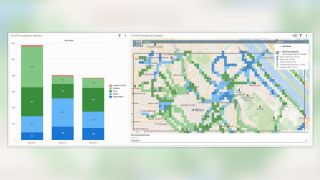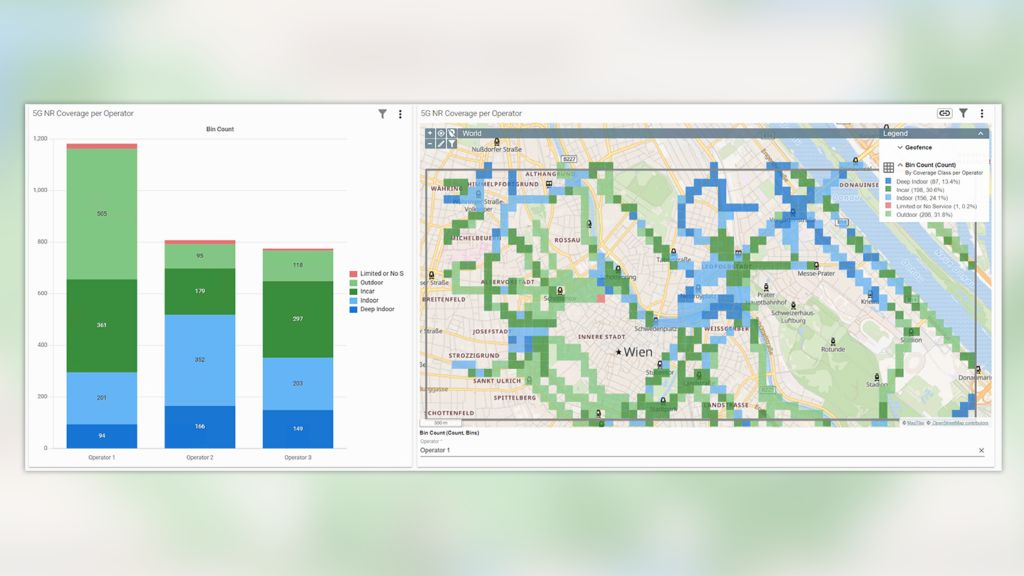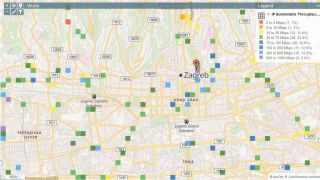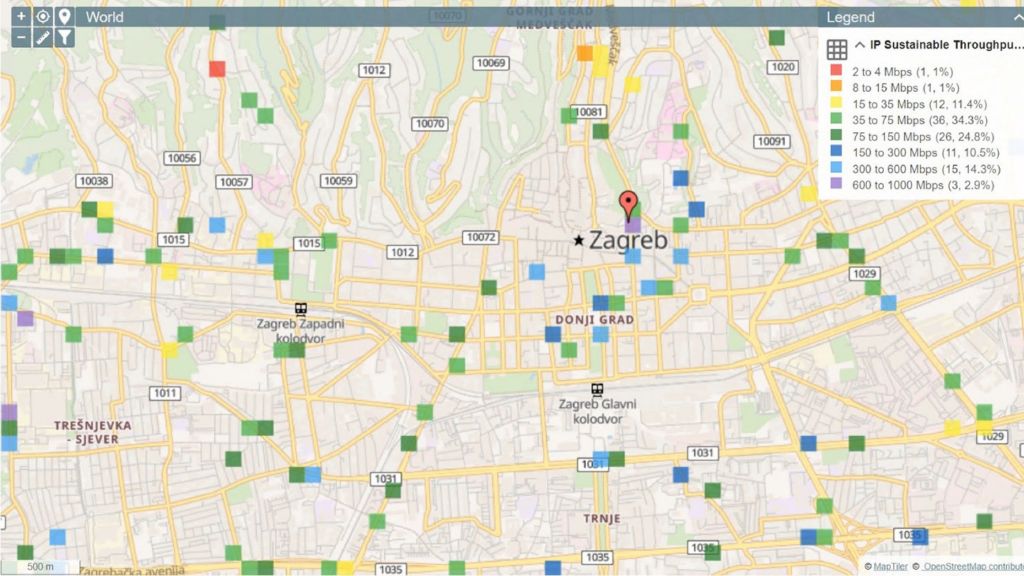Written by Anna Llagostera | April 15, 2024
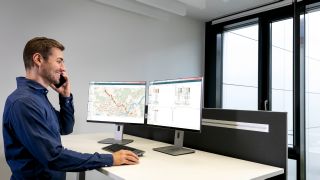

National regulatory authorities
NRAs oversee and regulate the telecommunications sector within a country's borders. NRAs develop and enforce regulatory policies, issue licenses to telecommunications service providers and ensure compliance with established regulatory standards.
NRAs handle consumer complaints and make sure that telecommunications services are available to everyone within a country. They also monitor and control radiofrequency spectrum usage by assigning and managing frequencies to prevent radio services from interfering with one another.
Field measurements: The most precise view of a network
Field measurements provide the most reliable coverage and performance data for mobile networks at a specific location and time. The measurements are conducted under real geographical and load conditions for a precise depiction of the mobile network under study.
Field measurements can provide different levels of information to NRAs based on what they need. Realistic coverage information can be derived from scanner measurements, while data transmission speed measurements help NRAs understand spectrum usage and describe network performance under realistic loads. Finally, user experience in newer, more demanding applications, services and content can only be measured with more advanced quality of service and quality of experience (QoS/QoE) indicators.
Spectrum validation
The 5G rollout made spectrum clearance important. Mobile network operators (MNOs) need to use new bands that previously contained other services. Field measurements characterize the radio environment by identifying external interference sources in a frequency band, so that they can be effectively found and eliminated. The measurements can also help identify which of the growing number of private networks are a source of interference.
Coverage measurements
The spectrum obtained by an MNO needs to be managed and used in line with licensing obligations. Obligations may include advanced technology requirements, such as deploying LTE or 5G in sparsely populated or rural areas.
Field measurements with a scanner* present a picture of the technologies, frequencies and bandwidths that are actually deployed. Scanner measurements can verify the reliability of the mobile coverage data from MNOs and validate compliance with license obligations. The data can also identify interference and collisions between MNOs, particularly in border regions.
Radio coverage can be classified into multiple predefined categories with signal level and/or signal quality thresholds. Coverage categories are commonly represented on a map by aggregating individual results across geographical bins.
Even though scanner measurements provide realistic coverage information, they do not explain how devices in the network utilize the spectrum or the quality of the user experience.
Data transmission speed measurements
Data throughput measurements enhance understanding of spectrum usage because the results are influenced by the assignment of radio resources under realistic loads in mobile network cells. The measurements reveal how a spectrum (technologies and frequencies) is assigned to users and whether features, such as carrier aggregation, are activated to provide users with additional capacity.
Large-scale and statistically representative data throughput measurements help inform consumers and let them make informed purchasing decisions. The measurements foster a healthy competitive environment and encourage MNOs to upgrade and improve mobile networks.
Measurements of QoS and QoE
The internet has evolved to include ever more demanding applications, services and content, which impose greater demands on mobile networks and drive their development. Higher data rates are no longer the primary requirement for QoS and QoE. New services require reliable transmission, low latency and low jitter. Data traffic in mobile networks is no longer driven just by people, but by new device, remote control and automation use cases with specific performance needs.
Telephony has also undergone significant changes. Circuit-switched (CS) voice calls are no longer dominant. VoLTE technology is preferred in LTE networks. 5G NR networks will further expand in the future and VoNR will continue to grow. Consumers are also increasingly making voice calls with OTT VoIP applications such as WhatsApp, Microsoft Teams or Signal and there is a growing trend towards video calls.
Popular and common services such as video streaming, browsing and web content delivery, social media and messaging should also be measured to provide a complete picture of the quality of experience. The growing use of cloud gaming, XR, industrial automation and remote control are making services more interactive and real time, making it more important to measure data latency in line with protocols and traffic patterns for such services.
Network complexity and consumer traffic is making field measurements of coverage, CS telephony and data rates insufficient. Regulators seeking to inform the public about mobile network developments and QoE are expanding field measurements to include a broad range of QoS/QoE measurements.
If you want to find out more and learn about best practice indicators and methodologies that can be used at each level of analysis, from coverage to data rate and advanced QoS/QoE parameters, check out our educational note.
Please see an example of a measurement campaign in the press release: benchmarking campaign Iceland .
* The R&S®TSMx6 scanner is suited to drive and walk tests.
The Rohde & Schwarz network benchmarking portfolio supports clients at every step, from efficient data collection to smooth generation of reports and insights. Rohde & Schwarz experts from the network analytics services team offer mobile network benchmarking and new technology testing services on a global scale. We provide a turnkey solution to define a project, provide expert consulting services, acquire and analyze network data and make recommendations.





